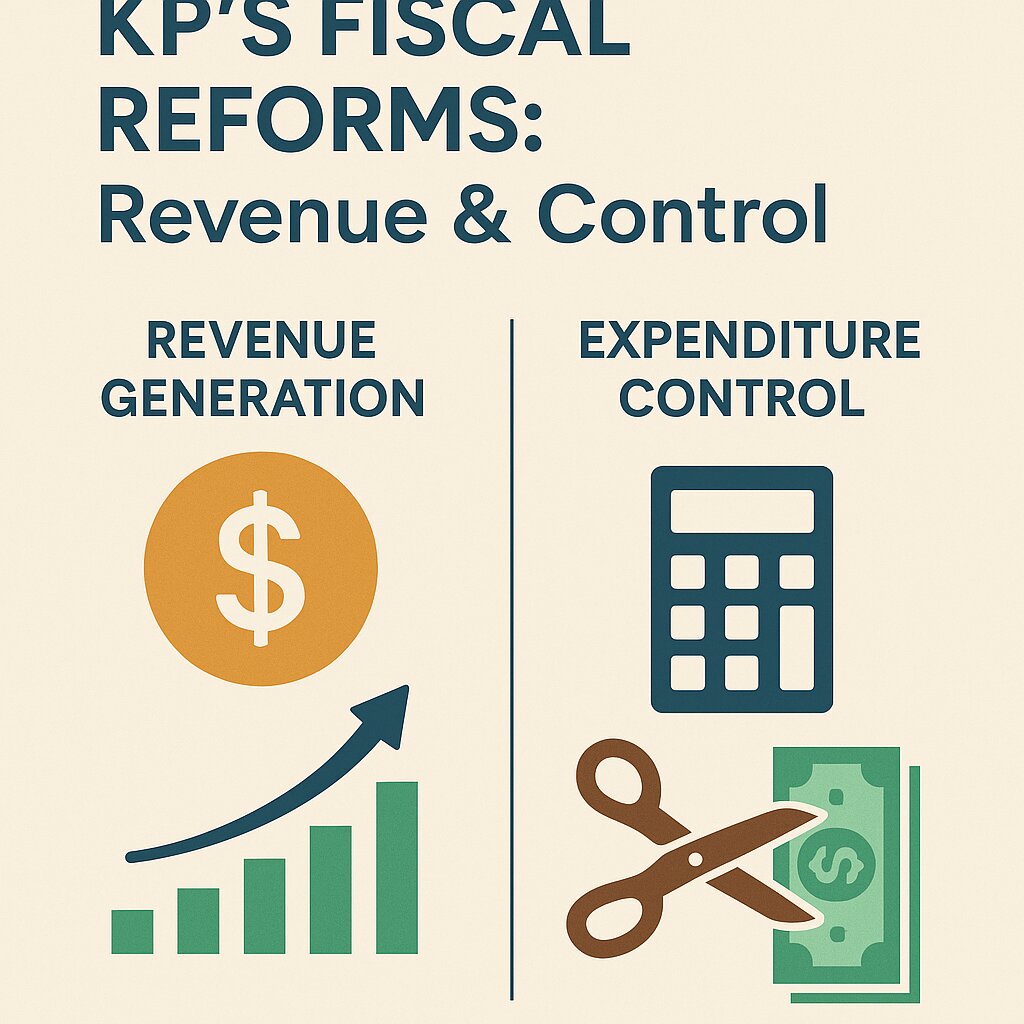
Khyber Pakhtunkhwa (KP), grappling with post-conflict reconstruction and limited fiscal space, has embarked on a series of reforms to bolster revenue streams and tighten expenditure controls. With federal transfers constituting over 80% of its budget, the province faces mounting pressure to achieve self-reliance amid rising demands for development and security expenditures. Recent initiatives—from digitizing tax collection to performance-based budgeting—aim to bridge fiscal deficits while ensuring efficient resource allocation. This article examines KP’s reform trajectory, evaluates its impact, and identifies challenges in sustaining fiscal discipline.
Revenue Mobilization: Digitization and Tax Expansion
KP’s establishment of the Khyber Pakhtunkhwa Revenue Authority (KPRA) in 2020 marked a turning point. Tasked with modernizing tax administration, KPRA introduced online payment portals, digitized property records, and expanded the tax base to include previously untapped sectors like services and tourism. Key outcomes include:
- Sales Tax on Services: Revenue surged from Rs. 8 billion (2019) to Rs. 25 billion (2023).
- Property Tax Reforms: GIS mapping of urban areas identified 50,000 undeclared properties, boosting collections by 40%.
- Automated Excise Duty: E-filing for tobacco and vehicle registration reduced leakages, raising excise receipts by 28%.
KP Revenue Growth (2018–2023)
| Year | Own-Source Revenue (Rs. Billion) | Growth Rate |
|---|---|---|
| 2018 | 45 | — |
| 2023 | 112 | 149% |
Despite progress, KP’s tax-to-GDP ratio remains low at 5.6%, compared to Punjab’s 8.1%, highlighting untapped potential.
Expenditure Control: Prioritizing Efficiency
To curb wasteful spending, KP adopted Performance-Based Budgeting (PBB) in 2021, linking 30% of departmental allocations to pre-defined outcomes like school enrollment or hospital bed occupancy. The health sector saw a 15% reduction in non-essential expenditures, redirecting Rs. 6 billion to maternal care and immunization. Additionally, zero-based budgeting compelled departments to justify all expenses annually, trimming redundant posts and saving Rs. 8 billion in 2022–23.
Austerity Measures:
- Ban on non-essential vehicle purchases (saving Rs. 1.2 billion annually).
- 10% cut in discretionary funds for provincial legislators.
- Energy-efficient buildings reducing utility costs by 18%.
Challenges: Resistance and Capacity Gaps
Reforms face systemic and political hurdles:
- Tax Evasion: Traders’ strikes in Peshawar and Mardan against property tax hikes forced rollbacks in 2022.
- Capacity Shortfalls: 40% of KPRA staff lack advanced data analysis skills, slowing digitization.
- Federal Dependence: Despite reforms, federal transfers still fund 78% of the budget, limiting fiscal autonomy.
A 2023 World Bank report noted KP’s public financial management score stagnated at 54/100, citing weak audit systems and delayed financial reporting.
Future Pathways: Institutional Strengthening
KP’s reform sustainability hinges on:
- Expanding Digital Tools: Blockchain for land records and AI-driven compliance checks to curb evasion.
- Skill Development: Training 1,000 finance officers in data analytics and forensic auditing by 2025.
- Public Awareness Campaigns: Building taxpayer trust through transparency portals showing fund utilization.
The province also seeks federal support to revise the NFC Award, advocating for higher shares based on security expenditures and poverty levels.
KP’s fiscal reforms illustrate the complexities of balancing autonomy with accountability. While digital innovations and austerity measures have yielded gains, entrenched resistance and structural gaps pose risks. By addressing these through institutional investment and inclusive policymaking, KP can solidify its fiscal foundation, turning reform experiments into enduring frameworks.
This article was published on PublicFinance.pk.
